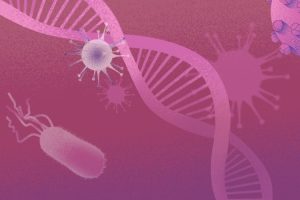Evolution of Humans
Biologist Steve Jones on natural selection, chimpanzees, and Queen Victoria
How does life expectancy change with the introduction of new methods into medicine? Which diseases are now constraining further life span increase? Associate Professor at Harvard Medical School Konstantin Khrapko explains why life expectancy grows linearly.
One of the most spectacular ways of presenting human longevity is the so-called maximum life expectancy plot. What is done is we look around the world for the country where life expectancy at birth is the longest and then we plot these life expectancies against time. So this plot is available for 150 years approximately and the most amazing thing about this plot is that it’s a straight line. It goes straight for 150 years without failing.
Perhaps the most amazing thing about this line is that it was apparently very resistant to great discoveries in the medicine. For example one of the huge factors in decreasing mortality was washing hands. When physicians started washing their hands the child and mother mortality went down humongously. But we don’t see anything on that curve, it still goes straight. Antibiotics were discovered, which of course saved lots of lives, but again at the time where antibiotics were discovered we don’t see any difference in that straight line.
what do we expect in future and do we expect that certain age-related interventions will significantly increase our life span? Most likely not, most likely this curve will keep going up and up as it used to be before. So far we don’t see any saturation. Actually this observation was done about almost 15 years ago the first time this curve was published. Since then it keeps going up just in the same pace so it was a good prediction and it was tested by time.

Biologist Steve Jones on natural selection, chimpanzees, and Queen Victoria

New research shows that snails that reproduce sexually are disadvantaged even when compared to polyploid asexu...

Associate Professor at MIT Leonid Mirny on the scales of the DNA structure, chromosome interaction, and parall...